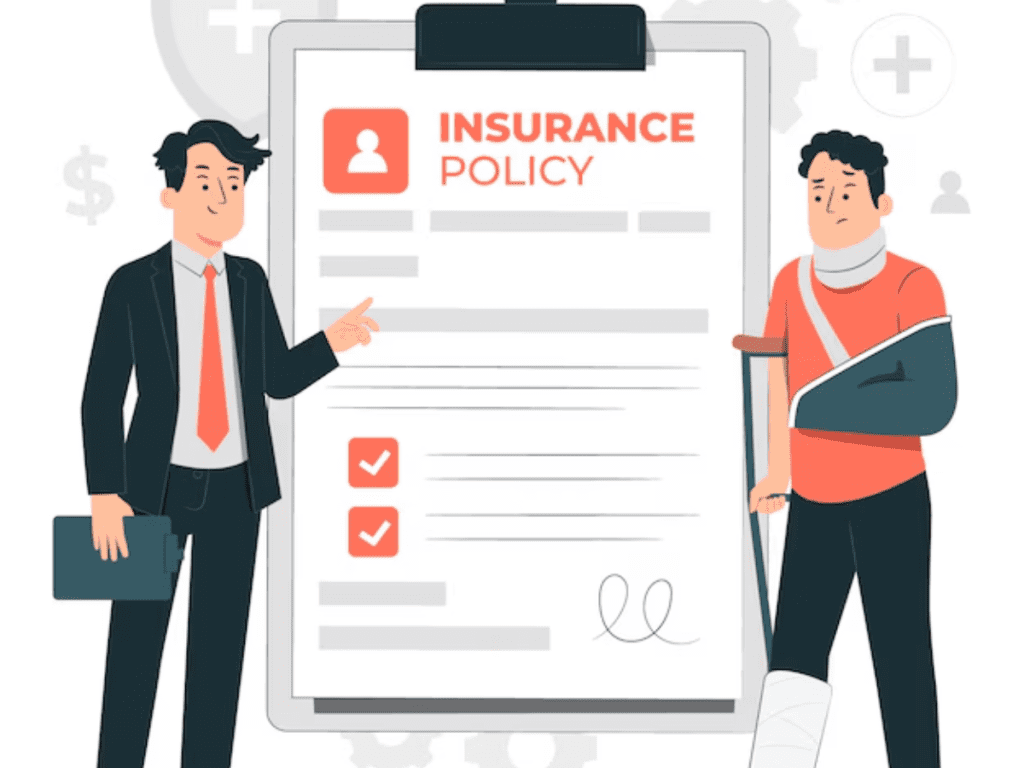Introduction
One of the most important financial decisions and health-related decisions you’ll ever make would be to choose a health insurance plan. The wrong health insurance plan would cause unexpected bills, limited access to your favorite healthcare providers, and poor coverage for your needs. Find out what the most common mistakes are in picking the right plan and how to avoid them to go forward with more knowledge and confidence. Here, you will find the pitting difficulties and elaborated instructions for each:.
1. Focus only on monthly premiums
One of the most common errors is that individuals consider the monthly premium as paramount. While the urge to gravitate toward a low-cost solution is understandable, the bigger picture should be considered in the process. A plan may have a low monthly premium but also have high deductibles, co-pays, or an out-of-pocket maximum, meaning that you might face large bills when you need them most: in case of illness or injury. Moreover, such plans usually provide limited benefits or coverage.
Avoiding this Mistake
Analyze the plan cost- it encompasses all premium costs, deductibles, co-pays, and coinsurance.
Understand how much healthcare you are using. The fact that you may need frequent doctors visits or a lot of medicine use is more beneficial when selecting a higher-premium, low-deductible policy.
2. Ignoring the Provider Network
Another critical oversight is that you fail to check whether your preferred doctors, hospitals, or specialists are part of the network of the plan. If you end up with a plan that does not cover your healthcare providers, you could end up facing significantly higher costs for out-of-network services or lose access to them altogether.
Avoiding This Error
- Use the directory of the plan to ensure that your preferred providers and facilities are in-network.
- If you do not have a preferred provider, research which doctors and hospitals are part of the plan to ensure they meet your standards for quality care.
3. Failure to Consider Prescription Drug Coverage
Prescription medications can be a significant portion of health care expenses, especially for people with chronic conditions. A person may unknowingly end up in a financially difficult situation due to not verifying whether their prescriptions are covered under a plan or by misjudging the cost-sharing details.
How Not to Make This Mistake:
Review the plan’s formulary, which is the list of covered medications.
Look for any restrictions, such as prior authorizations, quantity limits, or step therapy requirements.
- Know that drugs are tiered, meaning the medication is put into a class that will raise your out-of-pocket costs.
4. Selecting the Wrong Level of Coverage
Most health insurance plans have levels of coverage, such as bronze, silver, gold, or platinum, and different degrees of cost-sharing. Choosing a plan that either has too much or too little coverage for your needs can be a financial waste.
How to Avoid This Error:
Underline the assessment of your health care needs, including how often you go to the doctors, your general medical cost, and how much risk you can afford to carry in terms of “out-of-pocket” spending.
Consider if you are generally healthy and not often getting sick or hurt, a high deductible plan that comes with a Health Savings Account (HSA) would be very suitable.
On the other hand, if you need frequent medical service, higher premium cost and less cost-sharing would be more adequate.
5. Not Reading the Fine Print
Insurance policies are notorious for their complexity and jargon, leading many people to skip over the details. However, this approach can leave one unaware of critical exclusions, limitations, or conditions that may affect coverage.
How to Avoid This Mistake:
Read the Summary of Benefits and Coverage carefully to know what the plan covers and excludes.
- Pay attention to specific services like maternity care, mental health coverage, or rehabilitation services, as these can vary significantly between plans.
6. Underestimating Future Healthcare Needs
Most people base their choice on what they are experiencing now and never think about future possibilities. A sudden illness or injury, scheduled surgery, or change in your health could leave you underinsured.
How to Avoid This Mistake:
- Consider your medical history and any hereditary conditions that might arise.
- If you’re planning significant life changes, such as starting a family, ensure the plan offers adequate maternity and pediatric coverage.
7. Failing to Compare Multiple Plans
With so many options, it is easy to settle on the first plan that seems acceptable. But failing to compare multiple plans may mean you’re missing out on better coverage, lower costs, or additional benefits.
How to Avoid This Mistake
Use tools provided by your employer, government exchanges, or insurance marketplaces to compare plans side by side.
– Focus on the details such as coverage network, advantages, and satisfaction levels by the clients.
8. Overlooking Preventive Care Benefits
Many health insurance covers preventive care such as immunizations, yearly checkup, and screenings for free. Still, most of the individuals ignore using this facility as early diagnosis may be helpful to minimize medical expenses later.
How to avoid the error
- Familiarize yourself with the preventive services included in your plan.
- Schedule regular checkups and screenings to stay on top of your health.
9. Waiting Until the Last Minute to Enroll
Rushing through the enrollment process often leads to mistakes, such as choosing the wrong plan or missing critical details. Procrastination also limits your time to seek advice or fully understand your options.
How to Avoid This Mistake:
- Begin researching plans long before the enrollment deadline.
- Take notes and ask questions when you don’t understand something.
10. Not Seeking Professional Guidance
Health insurance can be very confusing, especially for a first-time buyer. If you don’t get help when you need it, you might make a bad choice that doesn’t fit your needs.
How to Avoid This Mistake:
- Call licensed agents, brokers, or navigators who can give you personalized guidance.
Use the Internet, and customer support services to help clear up your confusion.
More Tips to Improve Your Decision-Making Process:
- Compare Employer-Sponsored Plans: You can evaluate any insurance with your employer based on premiums and cost-sharing. The employer usually offers lower premiums but limited choices.
- Understand Tax Benefits: In relation to plans like HSAs, keep yourself abreast of tax advantages that help balance healthcare spending.
Check reviews or ratings online regarding how customers feel about your chosen insurance company and handling of claims.
Exclusions and Limitations: All health insurance policies have exclusions (services not included) and limitations (bounds on certain benefits). These should be carefully looked at in order to avoid surprise upon treatment.
Supplemental Insurance
Most individuals do not consider other supplemental options that may complement their coverage. These include; dental, vision, or critical illness. These coverages can better protect you and are often lacking within standard health insurance coverage.
How Lifestyle Changes Affect Your Plan
Health insurance needs can change with your personal circumstances. Major life events such as marriage, birth of a child, career change, or retirement may necessitate adjustments in your insurance plan. Failure to update your plan during these times may make your coverage insufficient or too costly.
Some Key Situations to Keep in Mind:
- Marriage or Domestic Partnership: You could have to add a spouse’s coverage to yours, or determine whose employer’s plan is better.
- Having Children: The plan must cover comprehensive maternity care, pediatric care, and immunizations.
- Job Changes: Changing jobs could result in coverage lapse. Apply for COBRA or short-term health insurance in order not to lose your health coverage.
- Aging Out of a Parent’s Plan: Young adults turning 26 should look for options on the marketplace or through their employer.
Exploring High-Deductible Health Plans (HDHPs) and HSAs
High-Deductible Health Plans (HDHPs) are becoming more popular, especially for those who want lower monthly premiums. These plans are often paired with Health Savings Accounts (HSAs), which offer tax advantages.
Advantages of HDHPs:
- Lower monthly premiums.
- The capability to contribute to an HSA, which lets you save pre-tax dollars for qualified medical expenses.
- For healthy individuals who rarely use healthcare services.
Disadvantages of HDHPs
- Higher out-of-pocket costs before insurance begins to cover care.
- Not good for individuals with chronic conditions or frequent medical needs.
An HSA is a powerful tool for building savings for healthcare costs, as the funds roll over each year and can even be used during retirement. If you’re considering an HDHP, ensure you’re financially prepared to cover the deductible and use the HSA to your advantage.
The Importance of Customer Support and Reviews
Not all health insurance providers are equal. Some companies are excellent in customer service and claims processing, while others leave you frustrated with long wait times or denied claims. The reputation of the insurance company can save you a lot of stress by doing your research.
How to Research Providers:
- Check online reviews and ratings to understand other customers’ experiences.
- Seek ratios of complaints or scores of satisfaction released by bodies such as NCQA or J.D. Power.
- Talk to friends, relatives, or even colleagues to obtain recommendations.
Avoid the “Set It and Forget It” Mindset
Many people get into a routine of going with the same plan year in and year out without reviewing updates to the coverage, premiums, or their changing healthcare needs. Insurance providers generally update their plans annually, impacting costs, benefits, or access to networks.
Why Annual Reviews Matter:
Providers may add or remove doctors, hospitals, or medications from their network or formulary.
- Your health needs may change due to age, new conditions, or lifestyle factors.
- You might find a cheaper or more suitable plan during open enrollment.
Make it a habit to review your plan every year and compare it with other options to ensure you’re still getting the best value for your needs.
The Significance of Preventive Health and Wellness Programs
Most health insurance plans provide wellness programs and incentives for living healthy. The wellness programs can be in the form of discounts on gym memberships, rewards for reaching fitness goals, or access to nutrition counseling. People fail to take advantage of these perks most of the time.
Wellness Programs Benefits
Reduces the risk of chronic diseases through healthy living.
Saves money on healthcare through preventive care.
- Getting rewards such as premium reductions, gift cards, or wellness points.
Take some time to find out what your plan offers in terms of wellness benefits and include them in your daily routine.
Conclusion
Choosing the right health insurance plan requires careful consideration and thorough research. Avoid common mistakes such as focusing solely on premiums, ignoring provider networks, or neglecting to assess future healthcare needs. Remember, your health insurance is not just an expense—it’s an investment in your well-being and financial security.
Take your time, weigh the options, and seek professional advice if necessary. That is the right approach to securing a plan that will bring peace of mind along with comprehensive coverage and financial protection to you and your family.

